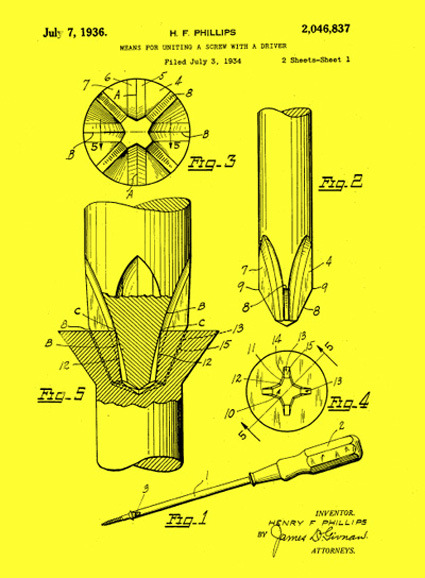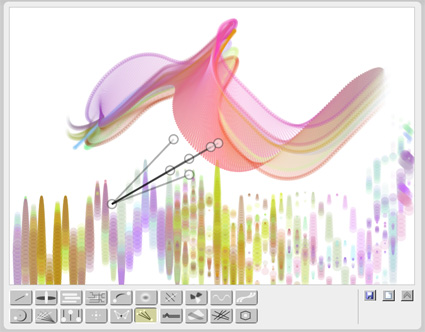
On July 7th 1936 (almost 75 years ago) Mr. Henry F Phillips received a patent for a type of screw and the accompanying screwdriver – the Phillips screw. The Phillips screw has been around for so long, and have been taken for granted for so long that I’ve never pondered about its birth – why did someone come up with a “+” shaped head to go along with the “-” shape. The only thing that went off in my mind was probably, “+” shape has four arms and somehow that makes it easier to turn and less likely to slip.
It was of course that, and more:
The Phillips-head screw and Phillips screwdriver were designed for power tools, especially power tools on assembly lines. The shallow, cruciform slot in the screw allows the tapering cruciform shape of the screwdriver to seat itself automatically when contact and rotation are achieved. That saves a second or two, and if you’ve got hundreds of screws in thousands of units (say, cars), you’re talking big time here.
And not only does a power Phillips driver get engaged fast, it stays engaged and doesn’t tend to slide out of the screw from centrifugal force. Another advantage: It’s hard to overscrew with a power tool. The screwdriver will likely just pop out when the screw is completely fastened.
Ah! That additional bit of engineering, design and thoughtfulness that almost everyone have taken for granted – and I suppose, that’s why it became such a popular fastener.
That said, consumer electronics do seem to increasingly treat screws with disdain – it is now seen more as a blot in the aesthetics, if you will. Could the screw ever one day disappear from manufactured products altogether?
[via WIRED]











